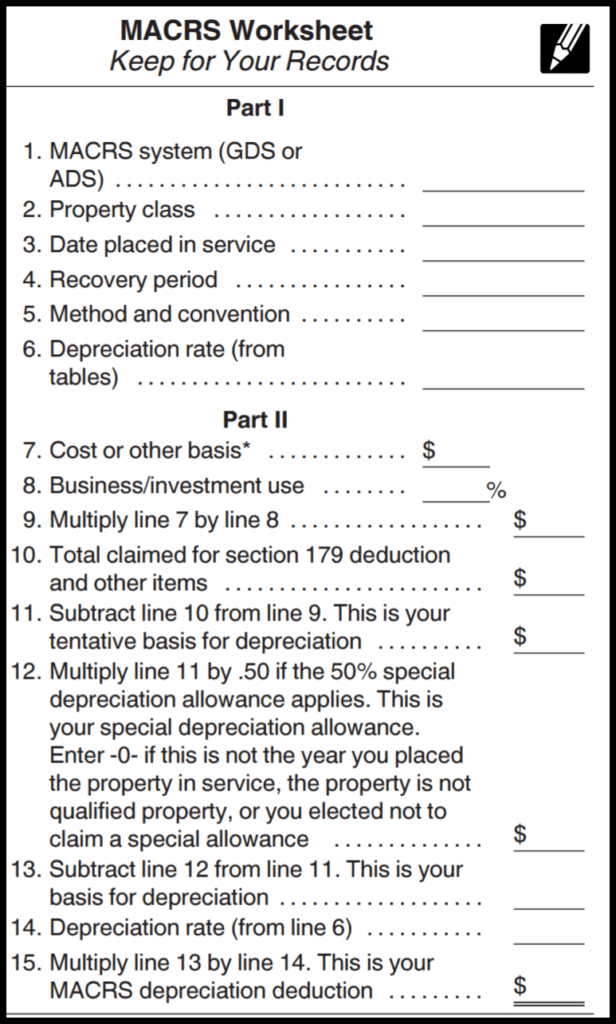
Double the rate, or 40%, is applied to the asset’s current book value for depreciation. Although the rate remains constant, the dollar value will decrease over time because the rate is multiplied by a smaller depreciable base each period. Depreciation has a direct impact on the income statement and the balance sheet but not on the cash flow statement. The expense is posted to the income statement, and the accumulated depreciation is recorded on the balance sheet. Accumulated depreciation is a contra asset account, so the balance is a negative asset account balance. This account accumulates the depreciation posted each year, and each asset has a unique accumulated depreciation account.
Other methods of depreciation

To get a better understanding of how to calculate straight-line depreciation, let’s look at a few examples below. Accelerated depreciation is very useful in growing industries like renewable energy. These methods are recognized in tax laws around the world, especially in the U.S. It does not matter if the trailer could be sold for $80,000 or $65,000 at this point; on the balance sheet, it is worth $73,000.
Types of Accelerated Depreciation Methods
- However, one can see that the amount of expense to charge is a function of the assumptions made about both the asset’s lifetime and what it might be worth at the end of that lifetime.
- Suppose that the company changes salvage value from $10,000 to $17,000 after three years, but keeps the original 10-year lifetime.
- The method chosen for this allocation can significantly impact a company’s financial statements and tax liabilities.
- In addition, there is a loss of $8,000 recorded on the income statement because only $65,000 was received for the old trailer when its book value was $73,000.
- The benefits and drawbacks of not using accelerated depreciation for a business are that the value will not be depreciated as fast, which means a higher purchase price.
- The graph below is a simplified view of how the accelerated depreciation and maintenance cost works out to give a straight line total expense.
When it comes to depreciation methods, the choice between straight-line and accelerated depreciation can have significant tax implications for businesses. The method selected not only affects the timing of expense recognition but also influences cash flow, tax liability, and even business strategy. straight line depreciation vs accelerated From a tax perspective, depreciation serves as a non-cash expense that reduces taxable income. Therefore, the faster a company depreciates its assets, the lower its taxable income will be in the short term. Different depreciation methods change how expenses show on the income statement.
Changes in balance sheet activity
The straight line method is known for its simplicity, appealing to businesses that want consistency in reports. This approach promotes easy understanding and steady annual depreciation expense reports—key aspects of financial reporting and accounting consistency. It provides a predictable expense deduction, aiding in smart asset lifecycle management. For example, using double declining balance or sum-of-the-years’ digits lets companies quickly defer corporate income taxes.
Accelerated Depreciation
Using the furniture example, we can see the journal entry the business would use to record each year of depreciation. In order to make the comparison as fair as possible, let’s assume company XYZ is just starting out as a business and they bought several new computers for their staff. Accelerated depreciation will help the airline take a higher reduction immediately hence reducing its current tax bill. The decrease in benefits is the reason why the Declining Balance method is also called Accelerated Declining Balance.
Choosing the right asset depreciation schedule is crucial for a company’s money strategy. Companies might use straight-line depreciation or go for accelerated depreciation for bigger early benefits. Depreciation is a major part of accounting principles and tax-saving techniques. Through depreciation, companies spread the cost of big purchases over the item’s life. The Internal Revenue Service (IRS) allows different depreciation methods, matching various business needs and asset types. The balance between accelerated depreciation‘s immediate benefits and the need for careful tax reporting is complex but necessary.
Suppose, however, that the company had been using an accelerated depreciation method, such as double-declining balance depreciation. The double-declining balance and the units-of-production method are two other frequently used depreciation methods. The straight-line depreciation method posts an equal amount of expenses each year of a long-term asset’s useful life. Business owners use it when they cannot predict changes in the amount of depreciation from one year to the next.
Your choice between declining balance method or sum of the years’ digits method depends on many things. It depends on how long you will use the asset, how you want to report expenses, and how you manage taxes. Each method has its own impact on taxes, financial statements, and what it’s best used for. By recognizing expenses faster, it matches costs with the quick drop in asset value.
Using an accelerated depreciation method has financial reporting implications. Because depreciation is accelerated, expenses are higher in earlier periods than in later periods. Companies may utilize this strategy for taxation purposes, as an accelerated depreciation method will result in a deferment of tax liabilities since income is lower in earlier periods.
This is just one example of how a change in depreciation can affect both the bottom line and the balance sheet. Because depreciation is accelerated, expenses are higher in earlier periods compared to later periods. Companies may utilize this strategy for taxation purposes, because an accelerated depreciation method will result in deferred tax liabilities since income is lower in earlier periods. Alternatively, public companies tend to shy away from accelerated depreciation methods, as net income is reduced in the short term.
Choosing the right depreciation method requires a careful analysis of tax implications, cash flow considerations, business strategy, and industry norms. Businesses should consult with financial advisors to understand the long-term effects of their depreciation strategy and ensure it aligns with their overall financial goals. The straight-line method of depreciation isn’t the only way businesses can calculate the value of their depreciable assets.
